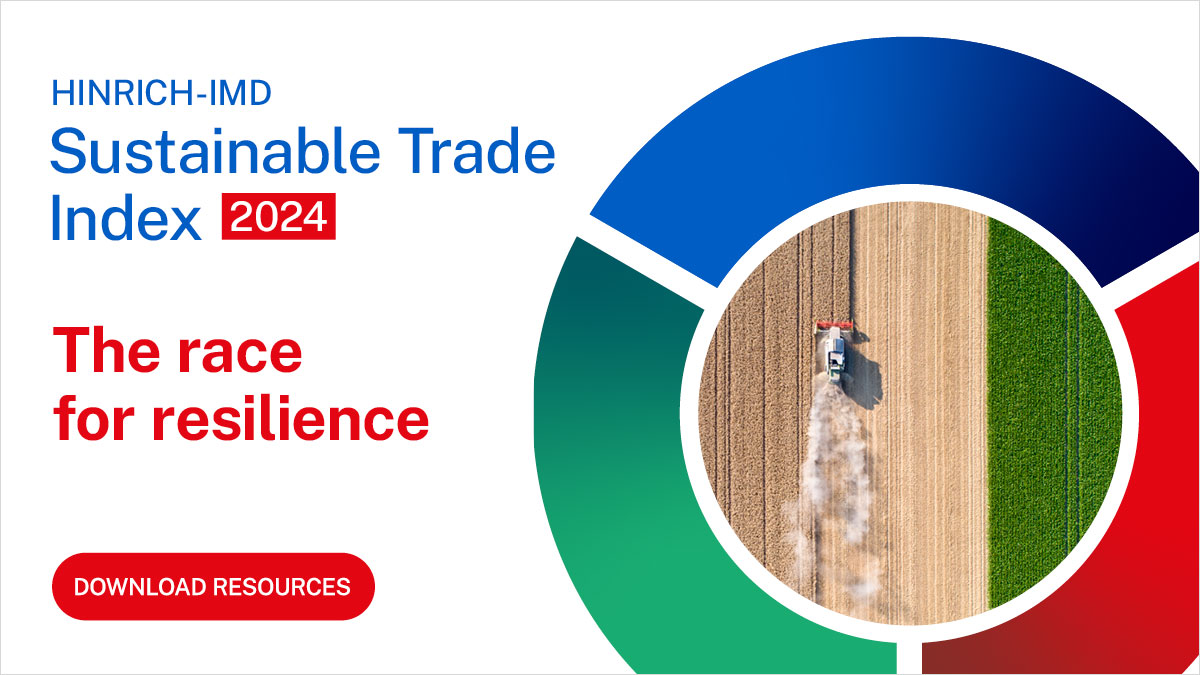Published 19 November 2024
International standards serve as a critical safeguard for businesses, shielding them from bottom-line losses associated with a wide range of challenges. Whether it's managing human rights issues in supply chains, ensuring product safety, or mitigating environmental risks, adherence to standards provides a framework for consistency, quality, and accountability.
In the dynamic landscape of global commerce, businesses face numerous challenges that can impact their profitability and sustainability. One of the most effective strategies companies employ to mitigate risks and ensure operational excellence is adherence to international standards. These standards not only provide a blueprint for best practices but also serve as a shield against bottom-line losses by promoting conformity with product specifications, as well as environmental, occupational health, and safety standards (EOHS), and ethical behavior. This article explores how adherence to standards enhances efficiency, reduces costs, and safeguards businesses from various real-world challenges.
Standards as best practice recipes
Standards play a crucial role in guiding businesses toward conformity and efficiency across diverse domains. Whether it's ensuring product quality, workplace safety, or environmental stewardship, adherence to standards establishes a framework for consistency and reliability.
Research indicates that companies certified to international standards are, on average, 10-15% more efficient and profitable than their non-certified counterparts. For instance, a study by the British Standards Institution (BSI) found that organizations with ISO 9001 certification (Quality Management Systems) reported increased operational efficiency and improved financial performance due to reduced waste and enhanced customer satisfaction.
The same applies to franchise businesses, which statistics show are 300-500% more likely to succeed than similar small businesses. The primary reason for this success is adherence to best practice recipes, guidelines, and standards that are audited and measured to ensure repeatability and the fulfilment of the customer promise.
Think of a standard as a recipe for best practices. For example, if you give 20 food ingredients to 20 people and ask them to create whatever they want, the absence of a recipe would yield 20 different outcomes. Standards provide the recipe, detailing quantities, timing, sequence, preparation, and cooking methods, to ensure a predictable, acceptable, and repeatable outcome.
Standards should be viewed not as regulations or directives, but rather as recipes that define the systems, methods, processes, sequences, and specifications needed to create a desired outcome. In fact, standards are instrumental in implementing regulations and directives. For example, the EN71 Toy Directive and regulations against modern slavery and bribery specify what actions are necessary to stay within the law. However, standards clarify what, why, and how to meet these regulations.
I love to quote the chief executive officer of the oldest wine company in the world, who said, "I love my certification because it provides the discipline to do the right thing and a mechanism for continuous improvement." This statement encapsulates the essence of standards. It’s about having the discipline to maintain consistent practices. We all know that when we stop following a routine — whether it's in diets, exercise, sports, music, or business processes — we deviate from the plan, and things can fall apart.
Proactive vs. reactive approach: Reducing costs of quality
Adopting international standards enables businesses to adopt a proactive approach to quality management and risk mitigation. By establishing robust systems and processes that comply with standards, organizations can prevent issues before they occur, rather than react to problems after they arise. This proactive stance not only reduces the cost of quality by minimizing defects, rework, and recalls, but also enhances operational efficiency, sustainability, and the bottom line.
For example, companies that implement ISO 9001 (Quality Management Systems) reduce waste, improve resource utilization, and streamline operations, leading to lower production costs and higher profitability. Similarly, adherence to ISO 14001 (Environmental Management Systems) helps organizations minimize environmental risks, comply with regulations, and enhance corporate responsibility, reducing the likelihood of costly environmental incidents and regulatory fines.
Most of the world’s top companies in oil and gas, mining, automotive, aerospace, electronics, consumer goods, and food manufacturing have their manufacturing facilities around the world certified to the top three or four International Organization for Standardization (ISO) standards including ISO 9000 Quality, ISO 14001 Environment, ISO 45000 OHS, and ISO 27001 Information Security. They will also probably then select an industry-specific standard, such as FSCC 22000 Food Safety, AS 9001 Automotive, ISO 13485 Medical Device, or ISO/TS 16949 Automotive.
They do this because it has an economic benefit, mitigates risk, and is a prerequisite to operate in certain supply chain ecosystems.
Real-world examples demonstrating the importance of standards
- Human rights violations: Global supply chains are frequently scrutinized for labor practices and human rights violations. Standards like ISO 26000 (Guidelines for Social Responsibility) and others such as WRAP, ICTI, FLA, BSCI, PSCI, RBA, WCA, and ETI offer guidelines on social responsibility, helping companies establish ethical practices throughout their supply chains. Many global brands including Nike, Apple, and Walmart have implemented robust supplier qualification processes to address labor issues, demonstrating their commitment to ethical sourcing and reducing reputational and financial risks.
- Toy product safety: Safety standards like ISO 8124 for toy safety and directives such as EN 71 and ASTM F963 are crucial for preventing hazards to children. Recalls of millions of toys due to safety issues like lead paint and choking hazards have led to stringent safety standards that protect consumer health and mitigate financial losses from recalls and legal liabilities.
- Personal safety equipment: Industries reliant on safety equipment, such as construction and manufacturing, must adhere to strict standards like ANSI/ISEA 107 for high-visibility apparel and the Personal Protective Equipment Directive 89/686/EEC. Defective safety equipment, including earplugs, helmets, safety shoes, safety harnesses, and ladders, can compromise worker safety. Litigation arising from allegations that these products do not meet safety standards underscores the critical need for stringent quality controls. When safety equipment fails to protect workers, it not only results in accidents but also leads to costly claims and recalls.
- Medical devices: Standards like ISO 13485 ensure regulatory compliance and patient safety in medical devices. Issues with faulty devices can lead to recalls and litigation, reinforcing the critical role of standards in ensuring product reliability and patient welfare.
- Mobility: Aerospace quality management standards such as ISO/TS 16949 and automotive quality management standards like ISO/TS 16949 ensure consistency in supply chains by reducing defects and enhancing product reliability. These standards are essential for ensuring that parts and components are produced in quality-controlled environments. Major aerospace and automotive companies will require their supply chain partners to certify to these standards as a prerequisite for supply.
- Food safety: Food safety standards such as ISO 22000 help companies manage risks associated with foodborne illnesses and contamination. These standards keep our food supply chains safe and prevent biological, physical, and chemical hazards in the food we consume, protecting public health and maintaining brand integrity.
- Environmental impact: ISO 14001 helps organizations minimize their environmental footprint and comply with regulatory requirements, defining objectives and activities aimed at reducing their impact on ecosystems and communities.
Supporting global and national Sustainable Development Goals
The United Nations Sustainable Development Goals (UNSDGs) provide a framework for addressing global challenges such as poverty, inequality, and responsible consumption. By adhering to international standards, businesses can contribute to these goals through sustainable practices, environmental responsibility, and ethical conduct within their supply chains. For example, implementing ISO 14000 can address 12 UNSDGs [1,2,3,4,6,7,8,9,12,13,14,15] while ISO 45001 can cover seven [3,5,8,9,10,11,16], and ISO 9001 can support four [1,9,12,14].
ISO certification can serve as a credible proof point, enabling organizations to meet the increasing requirements from buyers, financiers, and stakeholders.
Why organizations seek certification
Research shows the major reasons that organizations seek certification to ISO or other internationally recognized standards are:
- Trust and enhanced reputation: Certification demonstrates commitment to quality, safety, and ethical practices, enhancing brand reputation and stakeholder trust.
- Market access: Compliance with international standards facilitates entry into global markets by meeting regulatory requirements and customer expectations.
- Risk management: Standards mitigate risks related to product quality, safety incidents, environmental impact, and legal liabilities.
- Improve product quality and operational efficiency: Standardized processes reduce waste and defects, improve productivity, and lower operational costs.
- Customer satisfaction: Meeting standards ensures consistent product quality and reliability, leading to increased customer satisfaction and loyalty.
- Competitive advantage: Certification differentiates businesses from competitors and attracts customers who prioritize reliability and sustainability.
- Employee morale: Standards promote a safe and ethical work environment, enhancing employee satisfaction and retention.
- Innovation: Standards encourage continuous improvement and innovation in products and processes, driving long-term business success.
- Regulatory compliance: Certification ensures adherence to local and international regulations, reducing the risk of fines, penalties, and business disruptions.
- Sustainability: Environmental and social responsibility standards support sustainable practices, meeting growing demands from consumers, investors, and regulatory bodies.
Research from BSI shows the top five reasons for adopting certification are building trust, improving products and services, complying with regulations, reducing mistakes, and increasing competitive edge. All make good common sense.
Conclusion
International standards serve as a critical safeguard for businesses, shielding them from bottom-line losses associated with a wide range of challenges. Whether it's managing human rights issues in supply chains, ensuring product safety and reliability, or mitigating environmental risks, adherence to standards provides a framework for consistency, quality, and accountability. Real-world examples underscore the tangible impacts of standards across diverse industries, highlighting their role in fostering trust, enhancing efficiency, and securing long-term success in an increasingly competitive global market. As businesses continue to navigate complex regulatory landscapes and consumer expectations, embracing international standards remains a cornerstone of strategic resilience and sustainable growth which manage risk and protect the bottom line.
© The Hinrich Foundation. See our website Terms and conditions for our copyright and reprint policy. All statements of fact and the views, conclusions and recommendations expressed in this publication are the sole responsibility of the author(s).







